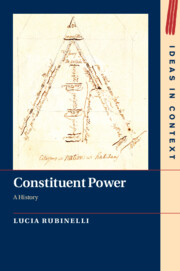Book contents
- Constituent Power
- Ideas in Context
- Constituent Power
- Copyright page
- Dedication
- Contents
- Acknowledgements
- Introduction
- Chapter 1 Sieyès and the French Revolution
- Chapter 2 Constitutional Politics in Nineteenth-Century France
- Chapter 3 The Weimar Republic
- Chapter 4 Constitutional Politics in Post–World War II Europe
- Chapter 5 Arendt and the French Revolution
- Conclusion
- Bibliography
- Index
- Ideas In Context
Chapter 1 - Sieyès and the French Revolution
Published online by Cambridge University Press: 28 April 2020
- Constituent Power
- Ideas in Context
- Constituent Power
- Copyright page
- Dedication
- Contents
- Acknowledgements
- Introduction
- Chapter 1 Sieyès and the French Revolution
- Chapter 2 Constitutional Politics in Nineteenth-Century France
- Chapter 3 The Weimar Republic
- Chapter 4 Constitutional Politics in Post–World War II Europe
- Chapter 5 Arendt and the French Revolution
- Conclusion
- Bibliography
- Index
- Ideas In Context
Summary
Although Emmanuel Sieyès is often read as a theorist of sovereignty, I argue that he theorised constituent power as a way of framing the principle of popular power alternative to ideas of both national and popular sovereignty. In his view, both versions of sovereignty attributed unlimited and absolute power to either the representatives in parliament (national sovereignty) or the multitude (popular sovereignty) and resulted, respectively, in legislative blockages or re-totale. Sieyès introduced his theory of constituent power to avoid both outcomes. Constituent power allowed him to claim that political authority resided in the people but was limited to the authorisation of the constitution-writing process, as carried out by elected representatives. Once the constitution entered into force, the people’s constituent power would retreat and make space for the constituted order, run by representative institutions. Yet these only had a limited power, as they could only act within the limits imposed by the people when authorising the constitution. The outcome of this theoretical construction is a constitutional representative government where the people who hold the original constituent power exercise it only indirectly (contra popular sovereignty), while the delegates who hold a derived constituted power exercise it only within limits (contra national sovereignty).
- Type
- Chapter
- Information
- Constituent PowerA History, pp. 33 - 74Publisher: Cambridge University PressPrint publication year: 2020



